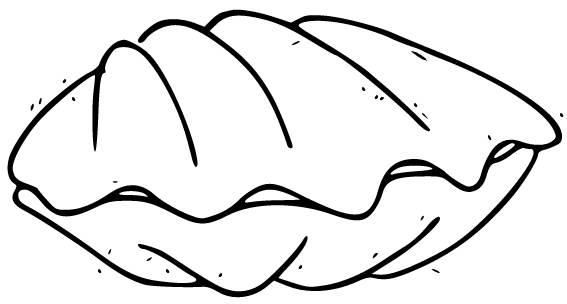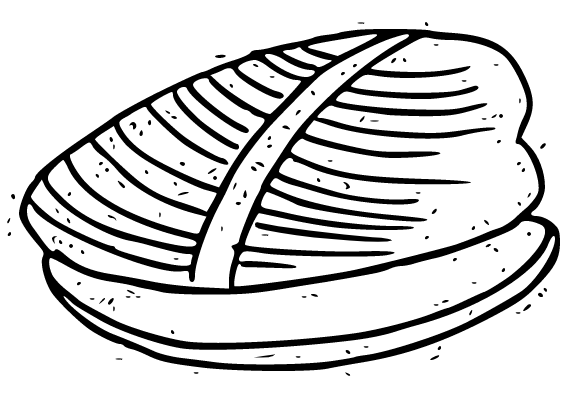-

-
The Discerning Mollusk's Guide to Arts & Ideas
-


nternationally renowned, Chilean-born Cecilia Vicuña has recently seen a surge in translations of recent and past works, further introducing and solidifying her voice in the English language. Two recent titles are of monumental significance in extending conversations that first emerged decades ago. In this double review, I examine two relatively new releases: Deer Book and Word Weapons, each entirely unique, awe-inducing collections that equally shed light onto this artist and her written and visual worlds’ worth of work. These books have arrived at the English-language world offering a glimpse at the vastness of Vicuña’s decades-long career through two unique projects, each of their own timelines, each of their own expressions and connectivity. They are unique yet inseparable. We see Vicuña’s worldview, her poetries of word and picture and installation and performance. These new portals are a fantastic milestone of translation and artistic wonder as we are invited in and invited in again.
Deer Book (Libro Venado)
Translated by Daniel Borzutzky
Radius Books, 2024

The massive Deer Book (or Libro Venado) is unlike any other book I’ve encountered. Layers upon layers of sequences are contained on unnumbered pages with beautiful and striking patterns and papers. This is a book that feels like an experience before the cover is even opened. The art of the tome is captivating, the deer emblems and icons glancing mysteriously on the cover. Upon opening, we are greeted with the announcement: this is Deer Book, by Cecilia Vicuña, translated by Daniel Borzutzky.
The table of contents unfolds. It is several pages long, all connected with handwritten text in black on yellow paper. It is the “Deer Book Map.” It moves us along to a page that is a pattern, a textile, and then a transparency, a totemic or emblematic image of a being with arms stretched out, a beam or antler or horn or crown emerging from its head. We are greeted with “The Animal Poem,” the first major section of the book.
Each of the book’s sections are presented with an inventive variation of translation, permutations of arrangement and style, as we explore language in the creative, amorphous way that signifies and spurs much of Cecilia Vicuña’s art. The type is clean, has a punch to it, moves the gaze across the page methodically, hypnotically, often moving between Spanish and English across geometric arrangements and color choices in the font.

Deer Book is filled with original and borrowed language: a collage across time and space. A translation of Eliot Weinberger opens “The Animal Poem”:
The poem
Is the animal
Sinking its mouth
In the stream.
The page later closes “Thirst is the thread.” We are transported. Or transposed, if only temporarily. Vicuña layers on language, the poetry and prose weaving along from page to page, pages absent of numbers, a flow of moments, a process that absorbs the reading experience and turns it into something else, something other, but still familiar: awash with ideas, language. A fuller literary emergence, undistracted.
“A poem lives in the in-between, the interval between languages.”
(from “The Animal Book”)
The text guides us through a fluid, mystical history. It is a book about Deer. Who is deer? Where is deer? Vicuña invites us to learn: “In Mesoamerica, deer worlds exist in a web of ‘mutually constitutive’ relations associated, since time immemorial, with sacrifice, fertility, speech, flowers, and the fluidity of water . . . in other cultures, deer is a translator, a sacred teacher called ‘the root of empathy,’ or the ‘Guardian of the Dharma,’ a master of trans-formation.”
As we move forward into the text, the resemblance of Deer behind the pages pulls everything together. But, as marionettes or bundles of energy, we are the ones with the motion. Deer sits behind (or within) each page, appearing to peer just as we appear to peer, a being or no-being of presence and documentation. A witness. A keystone of translation and translated experience.

Deer Book contains typed text and handwritten text, photography and hand-scrawled language. It is filled with cryptic wisdom and engaging wordplay. It is filled with indigenous knowledge and reflections on indigeneity in the corrupted and corroded present. It is also informed by transience and loss, the brutality of circumstance with ecological change.
Cecilia Vicuña started this book in multiple potential spaces, as she explains in the book’s afterword: in 2004 during a visit to the Lower Pecos River, located in what is commonly known as New Mexico, USA; in 1985 when she “encountered deer in the 15 Flower World Variations, the Deer Dance of the Yaquis by Jerome Rothenberg.” “I translated it into Spanish, but in truth, the poem translated me” writes Vicuña, a book of transformations born of transformation.
But transformation of what and to what? Within the artist’s mind, simple explanation is always matched with the infinite: that we may understand through total, complex engagement. Deer Book is one of these moments of infinitude, where we can encounter “Death of the pollinators,” where we can spread out across “The I of Sound,” where the section “Breath Flower” can find us and bind us through breath to the entirety of the book.

And as we are bound, as we breathe, so too do we hear. And “To hear is to heal” the artist lets us know (in “Sound Flower”), as we move in all directions toward center, no center, toward past, and toward future.

Word Weapons
RITE EDITIONS, 2023
 T
T
he colorful cover of Word Weapons draws us in. A bright red, hardbound cloth cover with beautiful blue scrawl and “Cecilia Vicuña” in a bold yellow. The new book, a mere 750 copies from RITE EDITIONS and the CCA Wattis Institute of Contemporary Arts is an experience of welcoming, of conversation, of exploration. It is also profound in its scope and scale, and a beautiful book to peak or dive into.
Upon opening the book, we immediately find the Palabrarmas, the word weapons, small, agile, vispo icons that move between word and firearm. The yellow on sky blue is electric and striking. Is strikes, and it sticks. We are greeted with these initial moments of presence, the imagery slowly sinking into the page. Its origins, the causation: this is the foreshadowing, this is the curtain lifting upwards toward the clouds.

Word Weapons is the result of a communal project, a Faculty Group composed of fourteen individuals committed to exploring Cecilia Vicuña’s work: “This book is published in conjunction with Season 7: Cecilia Vicuña is on our mind, a year-long season of private meetings and public events about and around the work of Cecilia Vicuña.” The “research season” went from September 2020 to August 2021, a cycle that led to this profound compilation.
The majority of Word Weapons is contained with “Visions,” a nearly-90-page section that presents Cecilia Vicuña’s Palabrarmas work from as far back as the 70s. A collection of handwriting and illustration printed on pages, scanned imagery, and photography from the artist’s performance art is all presented here page after page, with brief captions only providing minimal context. The reader is welcomed in, welcomed to browse, to scan, to select, to layer into meaning.
The collectors, the designers, the anthologizers, they have created a collection that creates a story, a single approach to a lifetime journey of art created by Cecilia Vicuña and the communities she worked within. It is an assortment that is humbling: to show snapshots and single frames from the word weapons, which are projectiles, which are enticing in their motion, and given space to sit and slowly open, emerge, arrive in this space.

In a form that mimics Cecilia Vicuña herself, the book is introduced only after the ritual of presenting the artist has been complete: we are then greeted with an introduction by Jeanne Gerrity that is both brief and thorough across its four pages. Context is reinforced with a second voice.
We learn that “words are acts” from Octavio Paz. We learn of Vicuña’s decades-long exploration of the intersection of language and images (page 99). The book is a collection, a series, the “urgent need for political engagement, coupled with a resolute love for humanity” (page 02). Gerrity’s pull is a triangulation, the mode towards conversation and community, to set the book upon itself with multiple visions, gazes, lenses.
Cecilia Vicuña herself is the third voice, appearing in a subsequent piece with beautiful description’s of the palabrarmas, the puns, references, and quirks of the vispo (and beyond): “To Work Words More.” What starts as a poem moves into a personal recounting of the word weapons, the first person experience, in all of its awe and psychedelic wandering.
This would be enough. This would be a powerful text, an enduring retrospective on the longitudinal beauty and the aspects of time that are necessary for Cecilia Vicuña’s work to exist. But there’s more. Gifts of ellipses in the form of additional essays, additional perspectives: “Mobilizing Words” by Mónica De La Torre and “Labor the word, spill the sound, unleash the tongue,” by Carla Macchiavello Cornejo. Two critical works that supplement history and inference with more details, more context, more triangulation.

The book closes with a final section: “Languages,” which serves as an appendix: bringing forward older, inspiring works that influenced and guided the artist: “From Rasa, or Knowledge of the Self: Essays on Indian Aesthetics and Selected Sanskrit Studies” by René Daumal, translated by Louise Landes Levi; “Sacred Language: Wordplay in Andean Cosmology” by Robert Randall, translated by Juana Berrío; and “Luces y virtudes sociales / Social Virtues and Illuminations” by Simón Rodríguez.
The book opens with mystery and closes with community. Thus, we have a toolkit, a process, a method of conjoining the multitudes of inquiry and commitment. This is a book of refraction and reflection, where we are gifted multiple approaches, multiple angles towards a center across space, time, and context, all of which aids us in movement through art, to reach wisdom, to explore language and its teachings in bold, living ways.
